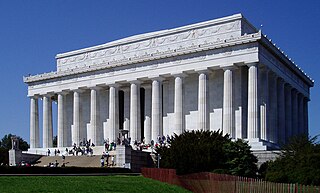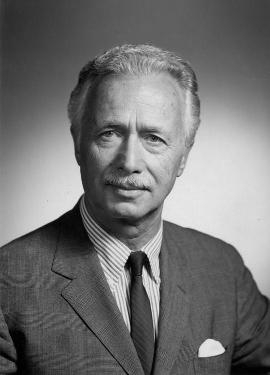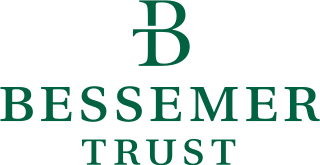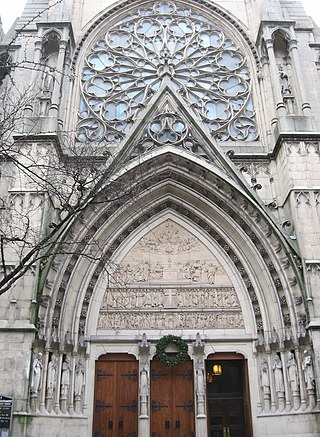Related Research Articles

Henry Bacon was an American Beaux-Arts architect who oversaw the engineering and design of the Lincoln Memorial in Washington, D.C., built between 1915 and 1922, which was his final project before his 1924 death.

Richard Morris Hunt was an American architect of the nineteenth century and an eminent figure in the history of architecture of the United States. He helped shape New York City with his designs for the 1902 entrance façade and Great Hall of the Metropolitan Museum of Art's Fifth Avenue building, the pedestal of the Statue of Liberty, and many Fifth Avenue mansions since destroyed.

Pietro Belluschi was an Italian-American architect. A leading figure in modern architecture, he was responsible for the design of over 1,000 buildings.

Bessemer Trust is a private, independent multi-family office that oversees more than $140 billion for over 2,500 families, foundations and endowments. Founded in 1907, the firm has its headquarters in New York City, with 19 regional offices elsewhere in the world.

Walker & Gillette was an architectural firm based in New York City, the partnership of Alexander Stewart Walker (1876–1952) and Leon Narcisse Gillette (1878–1945), active from 1906 through 1945.

EDO Aircraft Corporation was an American aircraft manufacturing company known primarily for manufacturing pontoons for floatplanes.

John Vredenburgh Van Pelt, F.A.I.A., A.D.G.F., was an architectural historian, author, and American architect active in early to mid-twentieth-century New York City. He was a partner in Green & Van Pelt (1906), in Thompson & Van Pelt (1925), and Van Pelt, Hardy & Goubert (1928–1930). He had his offices in New York City and Patchogue, Long Island.

Anthony J. DePace (1892–1977) was an American architect who designed numerous Roman Catholic churches throughout the Northeastern United States area during the mid to late 20th century.
The Church of the Blessed Sacrament is a Roman Catholic parish church in the Roman Catholic Archdiocese of New York, located at Forest Avenue at Manor Road, Staten Island, New York City, in the neighborhood of West New Brighton, Staten Island. The parish was established in 1910.
Robert J. Reiley, AIA, (1878–1961) was an American architect practicing in New York City in the early and mid twentieth century. He was particularly known as a designer of Catholic churches, schools, and hospitals in the Northeast USA.

Gustave E. Steinback (1878–1959) was an American architect practicing in New York City in the early and mid twentieth century. He was particularly known as a designer of Roman Catholic schools and churches. His offices were located at 157 West 74th Street in the 1920s, and in Stamford, Connecticut, in the 1940s.
Samuel Juster, AIA, was an American architect who practiced during the mid-20th century in New York City and New Jersey.
Lewis Greenleaf Adams, AIA, (1897–1977), was an American architect based in New York City who practiced in mid- to late-twentieth-century New York, New Jersey, and Connecticut, as part of the firms Malmfeldt, Adams & Prentice, Adams & Prentice, Malmfeldt, Adams & Woodbridge, Adams & Woodbridge, and under his own name at the end of his life, always based in New York City.
Frederick James Woodbridge, AIA,, was an American architect. His projects were based in New York, New Jersey, and Connecticut. He was partners in the firms Evans, Moore & Woodbridge, Malmfeldt, Adams & Woodbridge, and Adams & Woodbridge (1945–1974), as well as being a sometime archeologist.
Evans, Moore, and Woodbridge was an American architectural firm in early to mid-twentieth-century New York City. Through partner, Frederick James Woodbridge, FAIA, it was a predecessor firms Adams and Woodbridge, which estimated in 1953 that the firm and its predecessors had been responsible for "about 100 residences and alterations."
Adams & Prentice, Malmfeldt, Adams & Prentice, and Malmfeldt, Adams & Woodbridge were a series of American architectural firms in mid-twentieth-century New York City, with Adams & Prentice being the most well-known, all established by architect Lewis Greenleaf Adams, AIA with various partners. The series of partnerships were the predecessor firms of the influential firm Adams & Woodbridge, which was functional from 1945 to 1974 with partners Adams and Frederick James Woodbridge, FAIA, formerly of the firm Evans, Moore & Woodbridge. Adams & Woodbridge later estimated in 1953 that their firm and its above-mentioned predecessor firms had been responsible for “about 100 residences and alterations.” In 1929, the office was located at 15 West 38th Street, Manhattan.
John Cameron Greenleaf, AIA,, was an American architect based in New York City who practiced in the early 20th–century under his own name and as partner in the firm of Mills & Greenleaf.

Thomas Harlan Ellett was an architect who practiced in New York City.
Frederic Rhinelander King, was an American architect, and the co-founder with Marion Sims Wyeth of the architecture firm Wyeth and King.

Rose Connor was an American architect. Called "one of the earliest and most successful women architects of the 20th century", her architectural work was largely residential projects in Southern California, but she also did work for the U.S. military and Fuller Theological Seminary.
References
- 1 2 3 "Questionnaire for Architects’ Roster and/or Register of Architects Qualified for Federal Public Works "Archived copy" (PDF). Archived from the original (PDF) on 2011-08-13. Retrieved 2011-04-26.
{{cite web}}: CS1 maint: archived copy as title (link) April 30, 1946. - 1 2 3 4 5 6 7 8 9 10 11 "Questionnaire for Architects’ Roster and/or Register of Architects Qualified for Federal Public Works "Archived copy" (PDF). Archived from the original (PDF) on 2011-08-13. Retrieved 2011-04-26.
{{cite web}}: CS1 maint: archived copy as title (link) February 27, 1953. - 1 2 3 4 5 "Lewis Greenleaf Adams Archived 2011-07-24 at the Wayback Machine " American Architects Directory , Third Edition (New York City: R.R. Bowker LLC, 1970), p.5.
- 1 2 "Campus Building and Renovation Chronology".